The 50 States Project is a series of candid conversations with interior designers across the country about how they’ve built their businesses. This week, Charles Town, West Virginia–based designer Sharron Braylock of Studio One Design tells us how she learned to let go of the perfectionism that was holding her back, how attending High Point Market for the first time changed her business, and how reconnecting with a long-ago client reaffirmed her sense of purpose.
What was your path to launching your own firm?
Frustration. I was working in the corporate sector, realizing that my time was not my own, and that my creative muscle would never really get to flex if I played on someone else’s terms. I’d always be operating the way that someone else—a builder, a contractor, another designer—preferred me to operate.
The other main pain point was my children. My daughter was getting ready to start pre-K, and I felt like I should be able to get her to school in the morning and pick her up in the afternoon—I should not have to rely on help because I was sitting in traffic for an hour and a half each way.
What did your design career look like at that point?
Design has been my love language since I was a child, but I didn’t know what to call it when I was young. Prior to starting my company, I had been working for a family-owned builder—I started in a sales role and worked my way up to a management position within their design center, where I was overseeing the selection process with all of the new buyers. Then that company was bought out by a national builder in 2016, which put me in a different space. In a company that big, you get lost in the shuffle, and you hit a ceiling on your earning potential. I knew my value, and I knew what I should be making, but it was getting harder and harder to expect that working for a big company. It made me realize, “I want to do this my way.”
Where did those early jobs come from once you went out on your own?
When I started my company, the first job was with a client I met on the playground. And look, I was able to be on that playground because I had the time freedom that I wanted, right? This woman—who is now a close friend and my daughter’s godmother—started talking to me, and when she wanted to know what I did, I said: “I just left my company, and I’m starting my own interior design business.” She was buying a house and said, “Well, maybe you could help me. My husband and I don’t really know what we’re doing.” Now, I worked for builders, so I knew all the things about the home-purchasing process with a builder—but if I’m being honest, I really didn’t want to take the project. I was thinking, “I just left the builder world.” But I took it anyway, and it was the start of something very beautiful.
For the first couple of years in business, most of my work came from that one project. She referred me to everyone, and it gave me an early energy that is hard to find in business. Being a solopreneur, you have to continuously find that motivation and have that drive, and that can be hard to do when you don’t have the projects coming in. But that one project catapulted me into truly believing, “I can do this.”

No matter how much you didn’t want to be in that builder space, your background had to be so valuable for those clients.
I didn’t realize how unique that experience was at the time. I didn’t realize that it was going to allow me to leverage a lot of my skills within my business—to be honest, I just didn’t realize what I had. But once I took that project, I started to understand, “This doesn’t just have to be about designing a living room.” A lot of people get lost in the process of purchasing a home, and the design center can be intimidating. When I was working for the builder, I took a lot of pride in helping the new buyers navigate that process and putting them at ease. That first project allowed me to see that I can offer that same value in my own business and package it with whole-house design.
Is that typically how your projects unfold today?
Yes. Our ideal client is someone who is renovating a home, building an addition or building a custom home. Early on, I tried to do decorating-only projects, but I’ve learned that decorating isn’t my ministry. It comes along with what we do, obviously—you get to a point where it’s like, “OK, I’ve designed this space; now we’ve got to decorate it”—but my primary focus is changing how you live. For most people, their home is their most expensive asset. I want to utilize every square inch of that space for them so that they are getting the most value out of it. That’s what is fun for me.
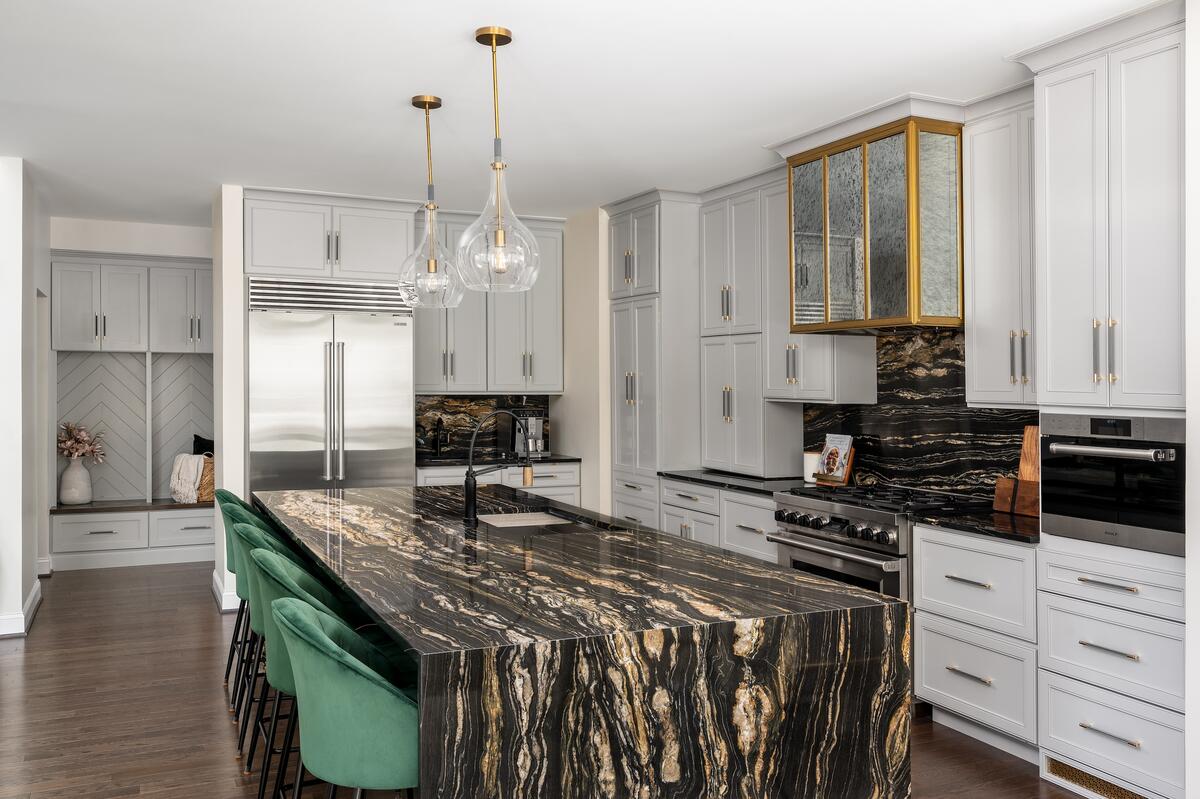
Are you still a solopreneur today, or have you built a team around you?
I have a small team. In-house, I have a project manager. Beyond that, I outsource to some companies that help with procurement, and I also outsource some admin work. And then I have a go-to contractor—I don’t know what I would do if he disappeared on me.
How has your role evolved as your business has grown?
Recently, I’ve been focused on working on the business instead of working in the business 24-7. I’m trying to document errors when we make them, and then make changes to the contract or the process when we encounter things that were unpleasant or that didn’t work. Before, I was just like, “Well, that happened. We didn’t like it, but on to the next one.”
Also, when I first started, I thought every project should be worthy of being in a magazine—I worked as if that were the goal for every single one, which is exhausting. We all know that every project isn’t a feature project, right? Some projects are just: The customer came to you, they had a need, you fulfilled the need, and then you moved on. I didn’t know how to do that in the earlier years. Every project was like my baby, and it would take me a long time to pull the trigger on small details because I just couldn’t get past the thought of, “What if this is picked up in a magazine?” Now, I’m very mindful of how I focus my attention on projects. I want to give clients the best of us, but I also understand that some projects are just a project—as long as the client is happy, we have to be happy, and we move on.
How did that change the way you show up in your work?
I’m not turning my wheels as much as I was in the earlier years. I am much more at peace with the decisions that I make. There’s a lot less pressure. It’s a healthy perspective to have, and I wish I had reached this place a lot earlier, but I’m here now, and this is where I’m supposed to be.
What drove that mindset shift for you?
One too many times obsessing over one too many minor things on a project that nobody would see but me—details that the client really didn’t care about. There weren’t enough hours in the day for that, and I was feeling really stretched. I didn’t have the mental capacity to take on more projects, because my current projects were extending well beyond what they needed to while I obsessed over making each job magazine cover–worthy. The projects were lingering. And then that light bulb went off one day, and I was like, “Sharron, enough is enough. We’re going to show up and give our best, but perfection doesn’t exist. Make the client happy, solve the problems that you’re hired to solve, and then put a lid on it.”

What does a full plate look like for you today? How many projects are you typically working on at a time?
The universe has been good to us this year. Right now, we have five projects, which is the most we’ve ever had at one time. It’s busy enough that I am gearing up to hire a full-time junior designer.
How has the way you think about the growth of the business evolved?
I’m going to need a tissue to talk about this. When I started this business, I didn’t have a clue what I was doing or how far I could go with it. I just knew that I wasn’t happy where I was, and I was determined to create something that would allow me to live the lifestyle that I wanted. And if I’m really being honest, the industry connections I was making really didn’t inspire me to think any differently, because when I would reach out to other firms just to build a bridge and make connections, it was crickets.
Does that still feel true?
In the last four or five years, there has been a shift. I don’t know what to [attribute] it to, but I am so grateful that the universe has decided to make this industry more approachable and inclusive, and to make it feel like there’s space for us all to win. That’s a very recent experience for me, and it started when I first began attending High Point Market. Perhaps it was happening before then, but that is when I recognized a different side of this industry, and it completely changed my outlook.
What did that crack open for you?
I avoided High Point for many years because I had a lot of preconceived ideas about it. Then a designer friend of mine encouraged me to go—he had all these wonderful things to say about changes that were being made there as it related to diversity and inclusion, and I said, “You know what? I’m going to go.” I did not realize the impact that it would have on my business. I truly did not.
Prior to that, I was sourcing more from retail brands than I’m proud to admit. So when I got to High Point, my mind was blown. And not just the brands there, but also the sheer energy of it all—to be around so many accomplished and aspiring creatives who were of the same mindset and who had a lot of the same goals and aspirations.
And the same struggles, too, I’ll bet. I think knowing you’re not alone is so powerful.
You’re right: You don’t realize that so many people have your same struggles. For a long time, I had just buried my head [in the sand] and worked—I didn’t look right or left, and I didn’t pay attention to what anyone else was doing in the industry. I’ve learned that that was a detriment to the growth of my business. I need to keep my head on a swivel, so to speak, and Market opened that up for me.
Did it also change the way you sourced?
Oh, my goodness, it changed everything. After my first Market, I went home, opened four or five accounts, and immediately made an extra $10,000 on a project. $10,000! Here it was the whole time, and I had been avoiding it for all the wrong reasons. Look, I believe I’m where I’m supposed to be, but I certainly wish that I had embraced it earlier, because I was leaving so much money on the table by not sourcing wholesale.
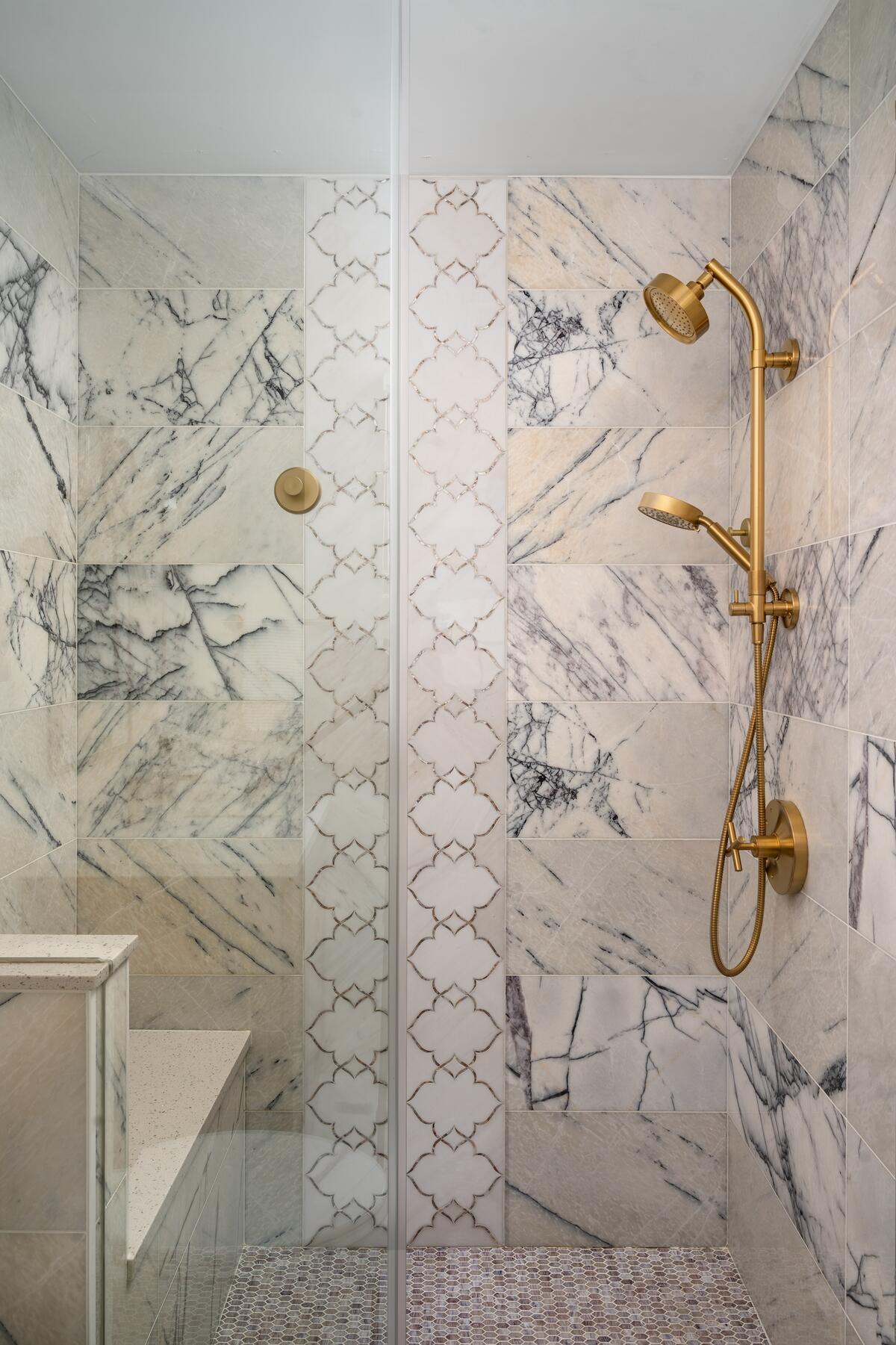
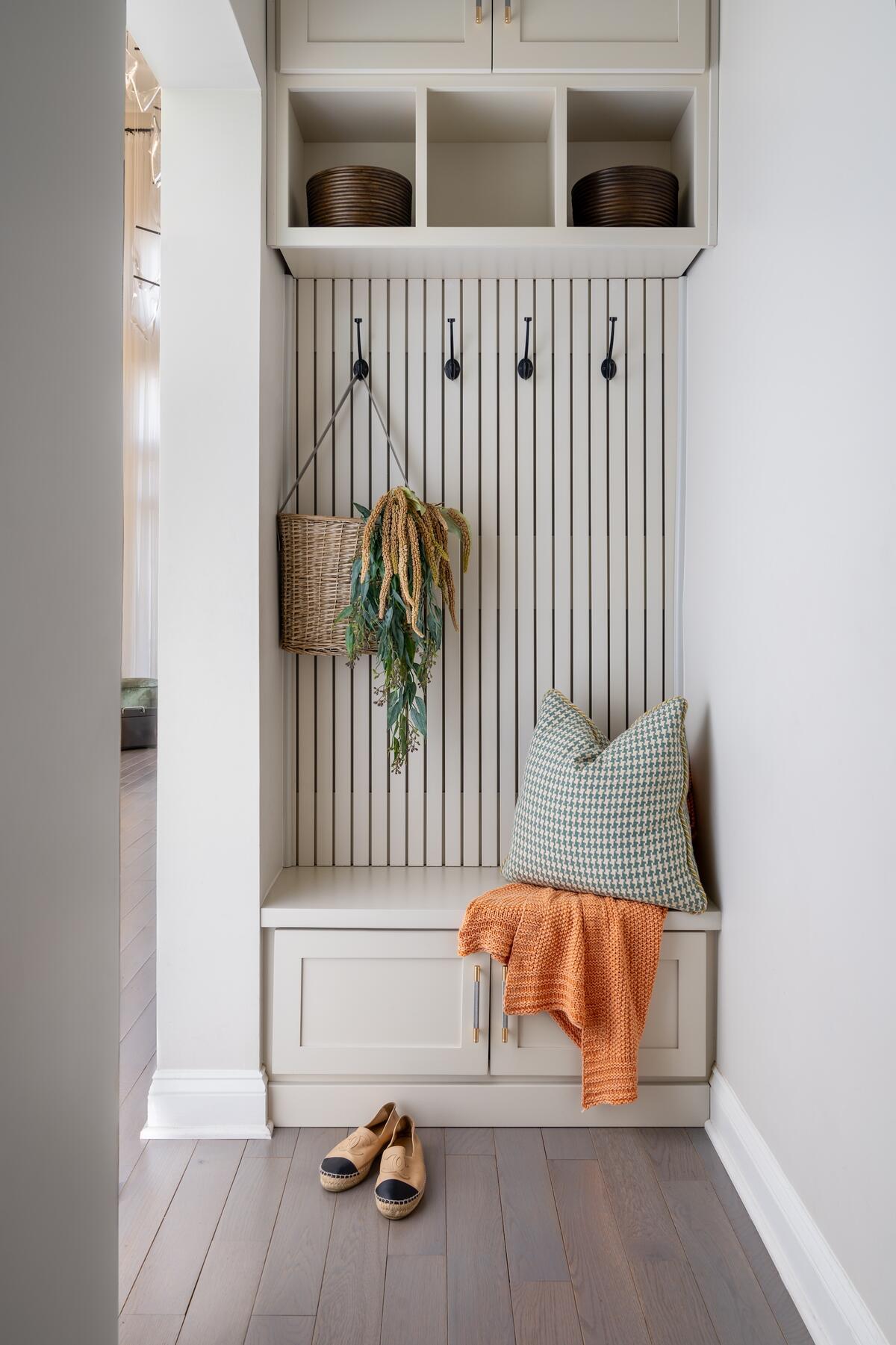
How are you assigning value to your work when you talk to clients?
My background is in new construction—I’m a kitchen and bath designer by trade—and I think my understanding of the construction world and the build process really allows me to offer my clients a lot more than what they would otherwise get. I’m not going into it just wanting to beautify your space; I’m changing how you live in your space.
With that in mind, how do you charge for your design work?
That’s kind of a pain point, if I’m being honest. Right now we charge a flat fee, but the more I talk to fellow designers, the more I have learned that I should be charging hourly if I want to be more profitable. I just don’t like hourly, because I’m a creative—and look, this isn’t going to be the smartest business answer, but I simply do not like tracking the time. I want to provide creative options for my clients, and doing that while billing hourly seems like such an intimidating approach. So we’re in the process of finding that line where we are flat rate but are putting a cap on hours.
How do you talk about money with clients and about the investment they’ll be making in the design of their home?
It used to be very uncomfortable. But at some point, I realized that I’m in a luxury industry. I am not providing life-sustaining surgery; it’s going to improve your life, sure, but you could also go your whole life without hiring an interior designer and you would be fine. And so if you sought out my services, it’s likely because you have the discretionary income to afford them. On top of that, I’m in business to make money, so the cost is what it is. And to your earlier question about how I assign value to my work, I believe that if you can truly show clients that they’re getting a lot of value in your services, they don’t balk at the money.
When I was working on the proposal for one of my first large projects, it took me about a week to submit it because it was the largest fee I’d ever charged, and I was worried that the client would think it was too much. But then my husband said to me, “You’re worth that and more, so why are you second-guessing this?” So I submitted the proposal, and the client cut a check the next day. They didn’t bat an eye. That’s how I realized that those who see the value in what I bring will sign on.
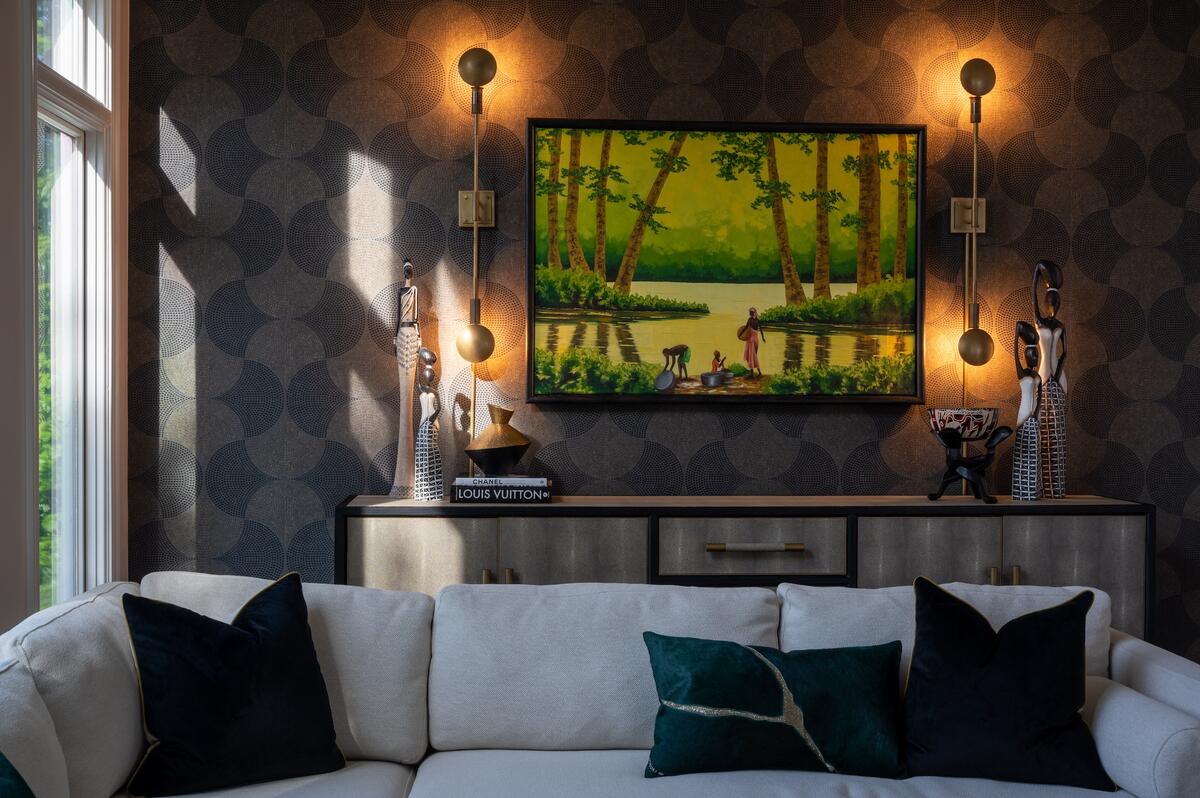
What is the design scene in West Virginia, and how does that shape the opportunities coming your way?
I’m in the panhandle of West Virginia, so I am 15 minutes from Virginia and about 10 minutes from Maryland. So, believe it or not, I’m doing my first-ever project that’s actually in West Virginia now—a secondary home for a client who lives in New York.
In my experience, people don’t move to the area I’m in to spend money on a service like interior design. They move to this area to save money—I mean, that’s why I moved here—so there haven’t been a lot of opportunities for me to take on projects. That may change in the future, though. The area is seeing a huge influx of folks coming from Maryland and Virginia, and even a lot further, so perhaps I’ll be able to work more in my backyard. But at the moment, I’m going where there are projects that speak to what it is that I do best—that’s mostly in Maryland and Virginia, and then we have a project in D.C.
We were talking about how High Point changed the way you source. But are there trade resources close to you?
Yes and no. In terms of custom craftsmanship and fabricators, there are a plethora of those. I use a local workroom for a lot of my upholstery, and I like the feel of working with mom-and-pop shops like that. We also do a good amount of custom carpentry and built-in cabinets, and we work with a local cabinetmaker for that. But when it comes to wholesale products, we’ve got to go to D.C.
What are you looking for in your relationship with vendors right now?
I’m feeling more and more empowered to be more selective about who I give my business to on the vendor side. As designers, we generate a good amount of business for these manufacturers, and I’m looking for relationships where I’m not having to chase folks down to give them the business. I’m finding that the mom-and-pop feel is what suits my business best—I don’t like feeling like I’m lost in the sauce with some of these massive vendors—and I’m looking for a connection with my reps.
But it’s other things too. I was telling my project manager just the other day that there’s one particular vendor we’re probably going to use a lot less going forward, just because they don’t make it easy or convenient. There aren’t enough hours in the day for me to navigate your antiquated website, especially if you aren’t able to provide good visuals. I wasn’t focused on those things earlier in the business—if sourcing took me twice as long because I was using a vendor with an outdated catalog or website, that just was what it was. But now, absolutely not. I need efficiency, and the more complicated you are as a vendor, the less inclined I am to give you my business.
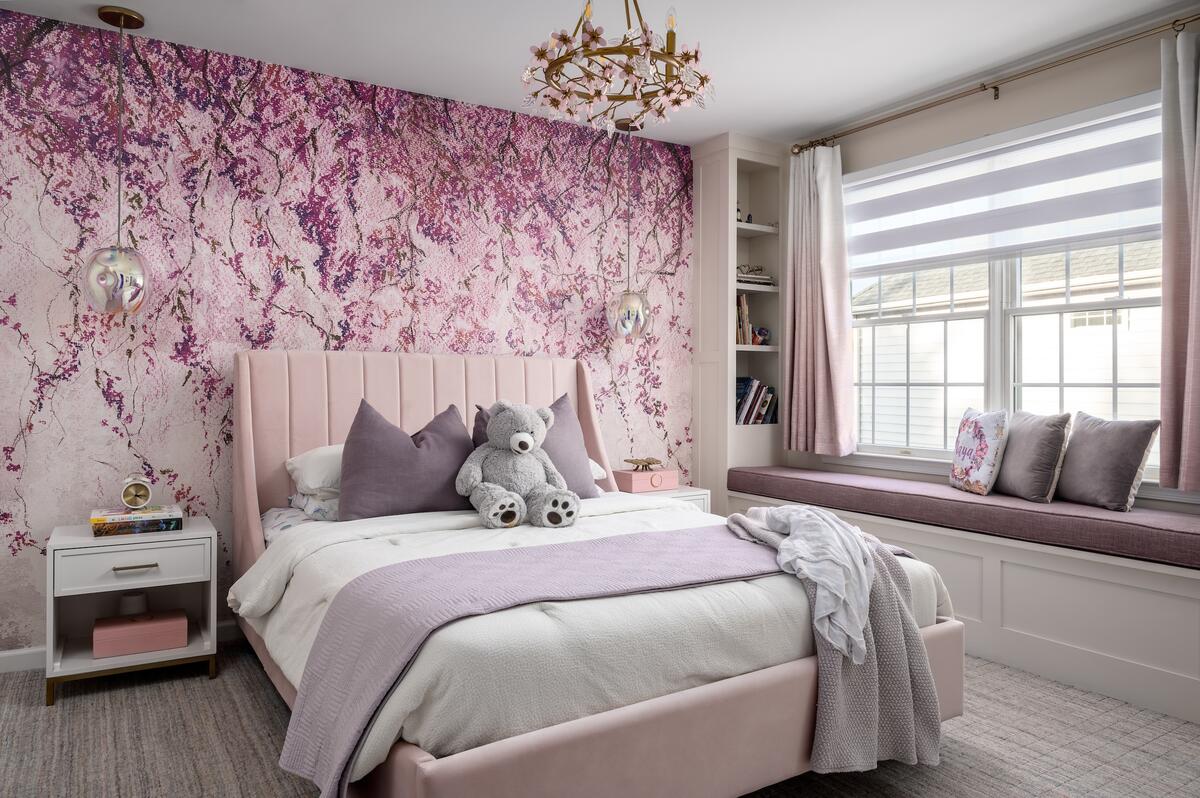
Where do you see opportunity for growth?
I’m in a program with Goldman Sachs called One Million Black Women, which was designed to provide minority women business owners with the tools and resources to accelerate and create longevity in their businesses. I’m nearing the end of this 10-week program, and I have never been more confident or optimistic about my future in business. I’m understanding certain things for the very first time, whether it be my financials or my strategic marketing position, and I’m applying them in real time. And so when you ask me where I see this business going, I’ll tell you: Within the next year, I see my business doubling our revenue. I see a full team. I see larger design-build projects. And it will all be a result of the work that I’m doing in this program now.
That’s amazing. What’s the biggest change you’re making as a result?
My role as the founder in this business. I used to pride myself on wearing all the hats and doing everything. But I learned that you’re never going to scale if you’re still trying to wear all the hats, and there are certain tasks that just shouldn’t be on the plate of the founder. So I’m learning to relinquish the responsibilities that were not accelerating the business.
You mentioned hiring a junior designer in the future. Is that part of that shift?
It is. I had hired a few design assistants in the past, and I almost became a bit jaded—I expected perfection, and developed this attitude where I would rather work solo than bring on the wrong person. But that was the wrong attitude to have. I have had to embrace the idea that the right person might magically appear, but they might not—the only way I’m going to find my person is if I kiss more frogs.
I’m realizing that I have to leave room for people to be people, right? I’ve made mistakes in this business, so anyone I bring on will surely make mistakes. But doing this work on my business and solidifying my process will bring more clarity for the talent that I do find and bring on. So that’s been my focus: working on the process so that [a new hire] can give me the very best that they have.
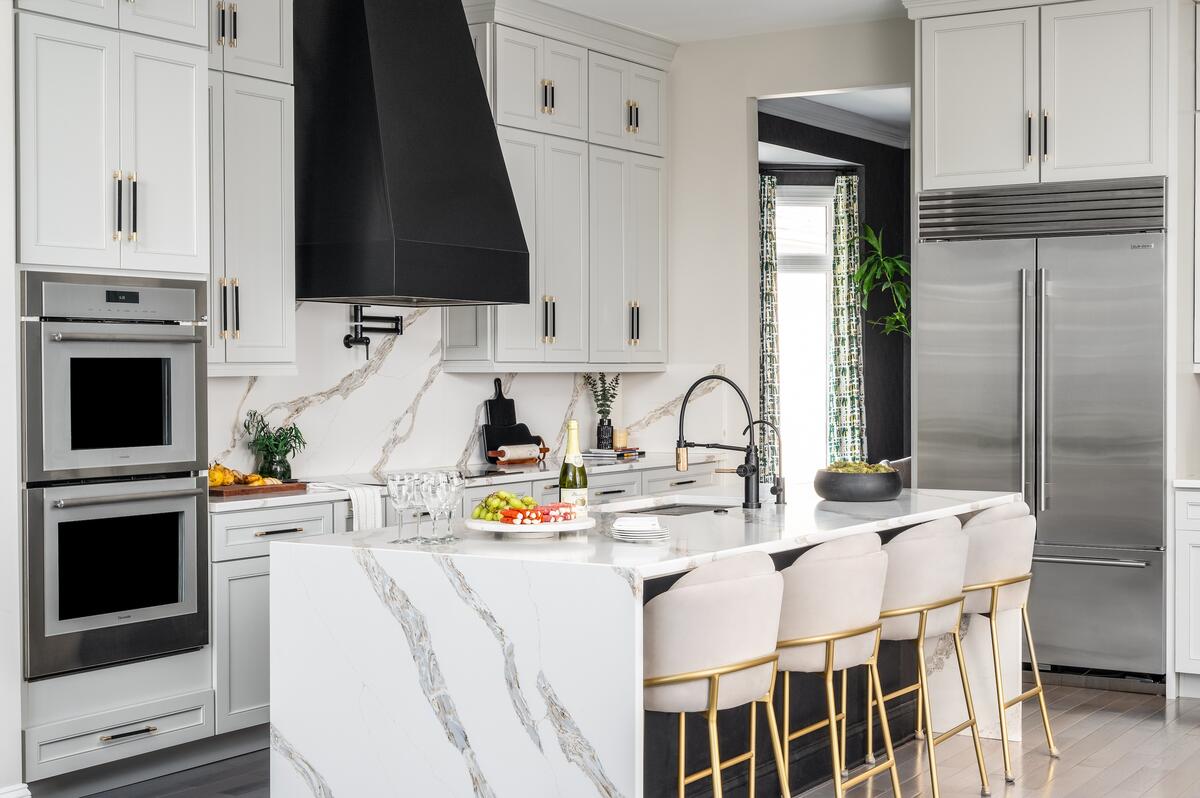
What does success look like for you?
Success looks like time freedom. As I get older, I’m learning that time is the most prized possession. You certainly can’t buy it. I want to create a business that can operate efficiently and sustain itself so that I can create more time with the people I love, and more time for traveling and seeing the world. I want to do a lot of things in this lifetime, and I can’t do those things if I’m chasing my tail in this business, right?
This conversation is success too. I’m still pinching myself that someone wanted to hear my story. When you start a business, you really don’t know if you’ll ever arrive at a place where people want to know your why—you just know that you want something different. This is one of my prouder moments, sharing this. I’m feeling very grateful.
There is one last piece: A client whose kitchen I designed 17 years ago called me and left a voicemail a few weeks ago. When I listened, I thought, “This person has the wrong number.” But I called them back anyway, and she tells me how I designed her kitchen back when I was pregnant with my now almost 17-year-old, and how she wondered where I was for years because there were other projects that she wanted to do in her house. Her son, who was a child at the time, had gone on to purchase a home of his own in D.C., and he wanted to work with me on the renovation. She had found me on a Google search and was completely elated. Like I said, going into it, I thought she had the wrong designer, but after hearing all of this, the energy in her voice made the hairs on my arm stand up and it just brought me to tears.
I am now designing a townhome in D.C. for her son, and when I had my discovery call with the two of them, he said to me: “Sharron, I’m so happy that my mom found you, because I just want to let you know the impact that that kitchen [you designed for her] had on my life. Growing up, we didn’t have nice things. But when you designed that kitchen, it was the most beautiful thing that I had ever seen. I felt proud of the house I lived in, and I felt like I could have friends over. It also made me have a different outlook on the lifestyle I wanted to create for myself as an adult—I knew that I wanted to [achieve the success] that would allow me to afford to live in a home that felt like that kitchen.”
That space was the springboard of all of these things in his life. And in that moment, I said to myself, “Sharron, if you ever doubted anything about your journey, this is proof that every hiccup, obstacle, frustration and pain point—every everything—was meant to be. It got you to this moment, and it was worth it. You are where you belong.”
To learn more about Sharron Braylock, visit her website or find her on Instagram.





























